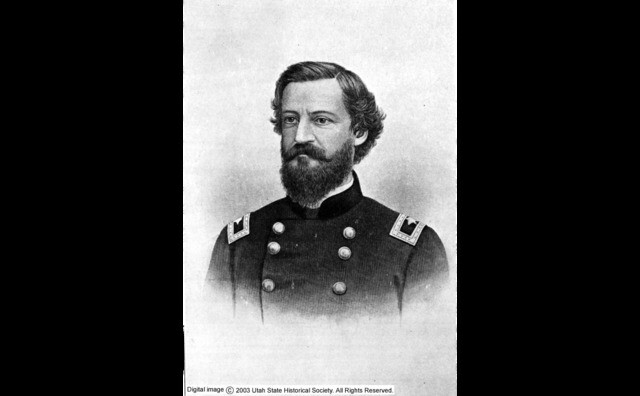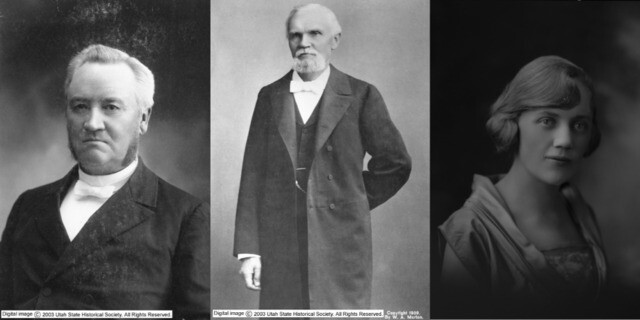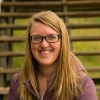Editor's note: "Scenes from Saints" is a series of articles highlighting interesting facts from Saints volume 2. This is the fourth article in the series.
- • Part one shares facts about the building of the St. George, Logan, and Salt Lake temples.
- Part two shares facts about early missionary work.
- Part three covers plural marriage and other relationship topics found in the volume.
Articles will be posted weekly during November and December 2020. You can purchase both volumes of Saints through Deseret Bookor read and listen to the volumes on the Gospel Library app under the “Restoration and Church History” section.
Saints, Volume 2: No Unhallowed Hand, is chock full of the good and bad that came with settling in Utah and living a new religion, covering everything from building temples and growing missionary work to struggles with plural marriage, details surrounding the horrifying events of the Mountain Meadows Massacre, and glimpses into the lives of members from Europe to the islands. Here are nine people you might not know about who are mentioned in this second volume.
1. Lawyer Thomas Kane, who was not a member of the Church, often helped the Saints.
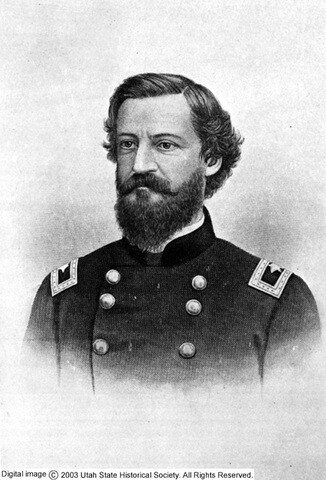
“Back in the eastern United States, news of Brigham Young’s thundering [public] rebuke of Judge Brocchus [during a conference Brocchus spoke at] caused an uproar. Newspapers accused the Church of being in open rebellion against the nation. One editor recommended sending the military to occupy Utah and maintain peace.
“The source of the news was Brocchus himself. Although Brigham had tried to make peace with him after the conference, Brocchus refused to apologize to the Saints and penned a scathing account of Brigham’s reaction to his speech. ‘The ferment created by his remarks was truly fearful,’ Brocchus wrote. ‘It seemed as if the people (I mean a large portion of them) were ready to spring upon me like hyenas and destroy me.’
“The Deseret News, the Church’s new newspaper, dismissed the charges as baseless. Realizing the harm Brocchus’s account could do to the Church, however, the First Presidency asked Thomas Kane for help, hoping his talents as a lobbyist and writer could prevent a scandal. Brocchus and two other officers, meanwhile, left Utah and immediately began sharing their stories, turning public opinion against the Saints.
“Thomas Kane agreed to help, and he worked closely with John Bernhisel, Utah’s representative in Congress, to share the Saints’ side of the story with the president of the United States and other government officials. Brigham also sent Jedediah Grant, the outspoken mayor of Salt Lake City and a trusted Latter-day Saint, to help Thomas in Washington, DC.”
Read more about this situation with Judge Brocchus and how Thomas Kane helped in chapter 10.
2. Rachel Hamblin, wife of the president of the Indian mission in southern Utah, Jacob Hamblin, defended and cared for the 17 children who survived the Mountain Meadows Massacre.
“Afterward, the stench of blood and gunpowder hung over Mountain Meadows. More than 120 emigrants had been killed since the first attack four days earlier. As some attackers looted bodies, Philip Klingensmith rounded up seventeen small children and carted them to the Hamblin ranch. When Jacob Hamblin’s wife Rachel saw the children, most of them crying and covered in blood, her heart broke. One of the youngest children, a one-year-old girl, had been shot in the arm.
“John D. Lee wanted to separate the wounded girl from her two sisters, but Rachel persuaded him to keep them together. That night, while Rachel cared for the anguished children, John bedded down outside the house and went to sleep.”
Learn more about what lead up to this tragedy and who was involved in chapter 18.
3. Latter-day Saint Karl Maeser taught music lessons to the children of a former United States president.
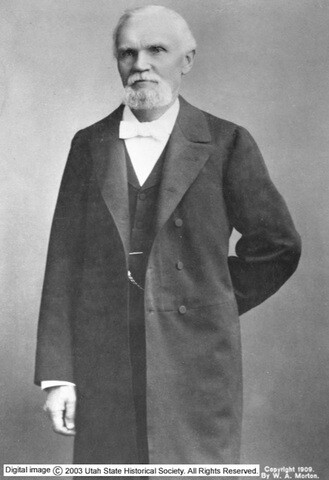
“In the summer of 1858, around the time the army passed through Salt Lake City, a schoolteacher named Karl Maeser received a flattering offer from the family of John Tyler, a former president of the United States. For months Karl had been teaching music lessons to the children of John and Julia Tyler at a spacious plantation in the southern United States. A German immigrant, Karl had impressed the Tylers with his good education, gentlemanly manners, and subtle humor. Now they wanted to pay him a salary to live near them and continue teaching their children.”
Learn more about this story in chapter 20.
4. An early Latter-day Saint missionary, Walter M. Gibson, abused his position as a missionary to try and build an island empire.
“Alma [Smith] took the letter [he had received from the Hawaiian Saints] to Brigham [Young], who read it to the Quorum of the Twelve on January 17, 1864. The apostles agreed that they had to take immediate action. Walter [M. Gibson] had set himself up as a prophet, swindled land from the Church, and oppressed the Hawaiian Saints. . . .
“Over the next two days, the apostles met privately with Walter. His misdeeds, they learned, went well beyond selling priesthood ordinations. It was almost too strange to believe.
“When Walter came to Lanai, he saw an opportunity to begin the vast Pacific empire he had long dreamed of establishing. He persuaded the Hawaiian Saints to donate their livestock and personal property to him so that he could purchase land on the island. Inspiring the Saints with his dream of empire, he organized a militia on the island and trained its members to invade other islands. He also sent missionaries to Samoa and other Polynesian islands to prepare those lands for his rule.
“The people soon began treating him like a king. No one entered his house to speak with him except on hands and knees. To inspire awe, he designated a hollowed-out boulder near his house to be the cornerstone of a temple. He placed a Book of Mormon and other documents in the rock, covered it with brush, and warned the Saints that they would be smitten if they went near it.”
Learn more about how Church leaders handled this situation in chapter 22.
5. Martin Harris, though no longer an active member of the Church, was the guardian of a key to the Kirtland Temple after the Saints moved West.
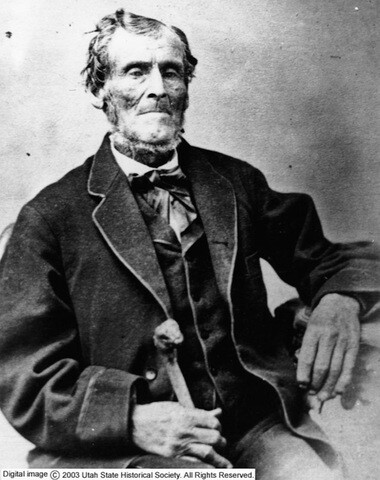
“After arriving in Kirtland, James and William called on Martin at his cottage. He was a small, poorly dressed man with a thin, leathery face and a discontented look in his eyes. William introduced himself as a missionary from Utah and the brother-in-law of Martin’s son.
“‘One of those Brighamite ‘Mormons,’ are you?’ Martin groused.
“William tried to give Martin news about his family in Utah, but the old man did not seem to hear him. Instead, he said, ‘You want to see the temple, do you?’
“‘If we may,’ said William.
“Martin retrieved a key and led James and William to the temple. The outside of the building was in fair condition. The plaster on the outside walls was still intact, and the building had a new roof and some new windows. Inside, however, James saw that plaster was falling off the ceiling and walls, and some of the woodwork was stained and marred.
“Walking from room to room, Martin testified of the sacred events that had occurred in the temple. But he grew tired after a while, and they stopped to rest.
“‘Do you still believe that the Book of Mormon is true and that Joseph Smith was a prophet?’ William asked Martin.
“The old man seemed to spring to life. ‘I saw the plates. I saw the angel. I heard the voice of God,’ he declared, his voice throbbing with sincerity and conviction. ‘I might as well doubt my own existence as to doubt the divine authenticity of the Book of Mormon or the divine calling of Joseph Smith.’”
Read more of Martin Harris’s story and journey back to Utah in chapter 25.
6. A convert from Mexico, Desideria Quintanar de Yáñez, had a dream about a Church tract.
“One night, around this time, Desideria Quintanar de Yáñez had a dream in which she saw a book called Voz de amonestación being printed in Mexico City. When she woke up, she knew she had to find the book.
“Desideria, a descendant of the Aztec ruler Cuauhtémoc, was well respected in Nopala, the town where she and her son José lived. Though most people in Mexico were Catholic, Desideria and José belonged to a local Protestant congregation.
“Desideria felt she needed to go to Mexico City to search for the mysterious book, but the city was about seventy-five miles away. A railroad line could carry her part of the way, but most of her traveling would be on foot along unpaved roads. Desideria was in her sixties and in no condition to make the arduous journey.
“Determined to find the book, she told her son about the dream. José believed her and soon left for Mexico City in search of the unknown book.”
Learn where Jose found the book and what book it was in chapter 32.
7. One Norwegian Latter-day Saint, Anna Widtsoe, was given permission to use her tithing money to make the journey to Utah.
“In the fall of 1883, Anna [Widtsoe] decided to leave Norway. ‘I am traveling home to Utah as soon as I can,’ she wrote Petroline in September. ‘If we cannot leave everything, even our life if required, we are no disciples.’
“Money was an obstacle, however. Her family would never help her make the move, and Anna did not know how she would pay the cost of emigrating. Then two returned missionaries and a Norwegian Saint donated some money to her. Hans also gave her some money for the journey, and the Church permitted her to use some of her tithing to help pay for her family’s passage.”
Read more of Anna’s story in chapter 33.
8. Anthon Lund was the first apostle whose native language was not English.

“Unlike the other members of the Quorum of the Twelve, Anthon had never practiced plural marriage. He was also the first modern-day apostle whose native language was not English. Wilford Woodruff was confident these differences could be assets to the quorum, and he knew that Anthon’s call was God’s will. Anthon’s gentle manner and skill with several languages could help lead the Church into the next century.”
Learn more about Elder Lund in chapter 39.
9. Future apostle John A. Widtsoe went through a faith crisis while attending Harvard.
“But Anna [Widtsoe] was concerned for John. He had recently written about his struggle to believe some aspects of the gospel. At Harvard, he had learned a great many things from his professors. But their lectures had also led him to question his faith. His doubts cut him to the bone. Some days he denied God’s existence. Other days he affirmed it.
“Anna prayed daily for her son, deeply distressed by his doubts. But she knew he had to gain his own witness of the gospel. ‘If you have not had a testimony for yourself before, then now is the time that you should have one,’ she wrote John. ‘If you seek sincerely and live purely, then you will receive it. But everything that we have, we must work for.’”
Learn more about John A. Widtsoe in chapter 44.
Bonus
President Ulysses S. Grant visited Utah and found himself “deceived” about the people there.
“Later, after arriving in Salt Lake City, Brigham parted with the Grants, expressing hope that they would enjoy their visit. From the train depot, the Grants then left for a tour of the city with George Emery, the territorial governor. As they drove near the temple block, they saw rows of children, dressed in white, lining the streets with their Sunday School teachers. As the Grants’ carriage passed, the children strewed flowers in the street and sang to the visitors.
“Impressed, President Grant asked, ‘Whose children are these?’
“‘Mormon children,’ said the governor.
“The president was silent for several seconds. Everything he had heard about the Saints had led him to believe they were a degenerate people. But the appearance and behavior of these children suggested otherwise.
“‘I have been deceived,’ he murmured.”
Read more about this visit and the First Lady’s conversation with Brigham Young in chapter 28.
Images from theUtah State Historical Society
Saints, Vol. 2: No Unhallowed Hand covers Church history from 1846 through 1893. Volume 2 narrates the Saints’ expulsion from Nauvoo, their challenges in gathering to the western United States and their efforts to settle Utah's Wasatch Front. The second volume concludes with the dedication of the Salt Lake Temple.


